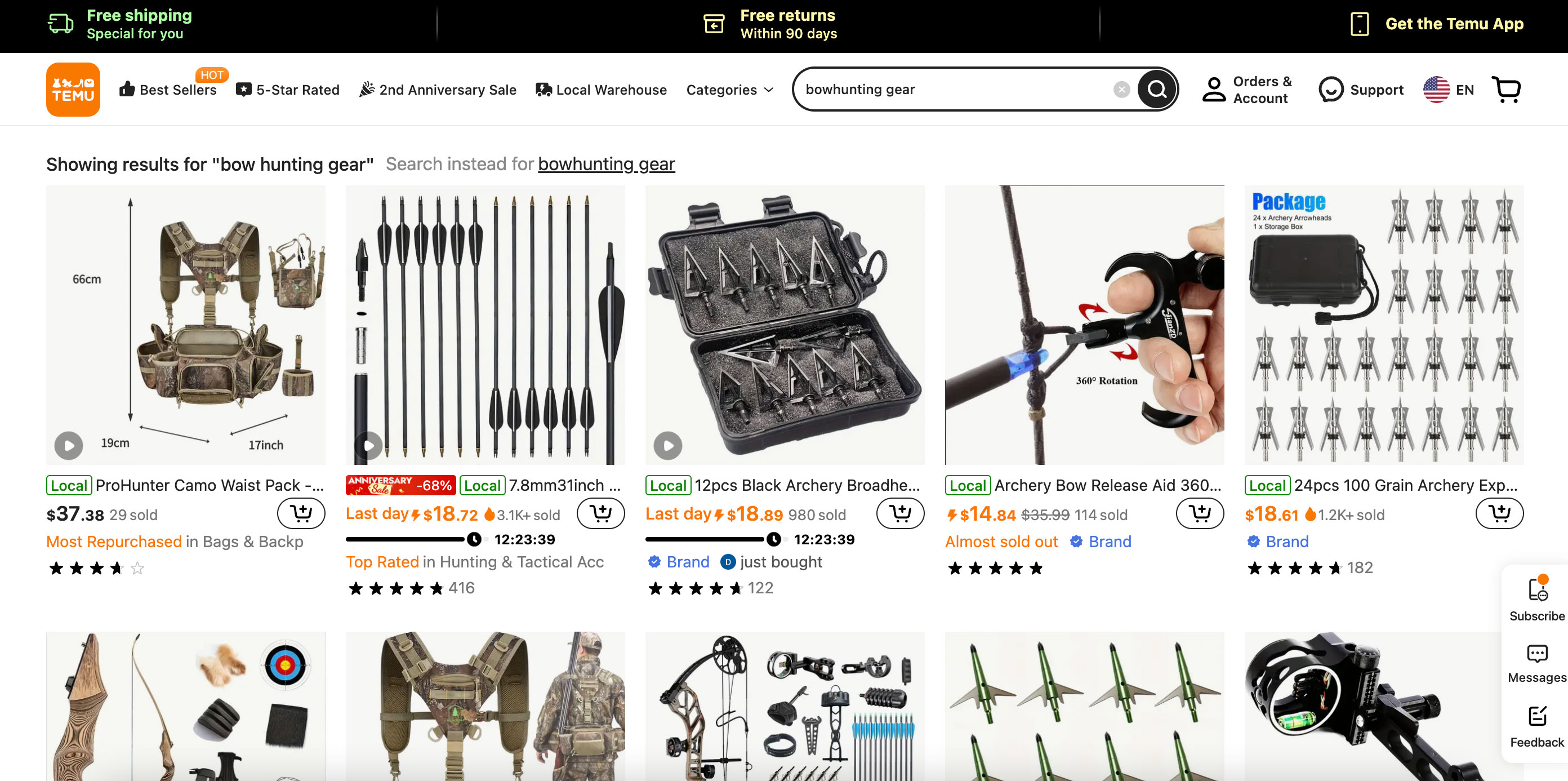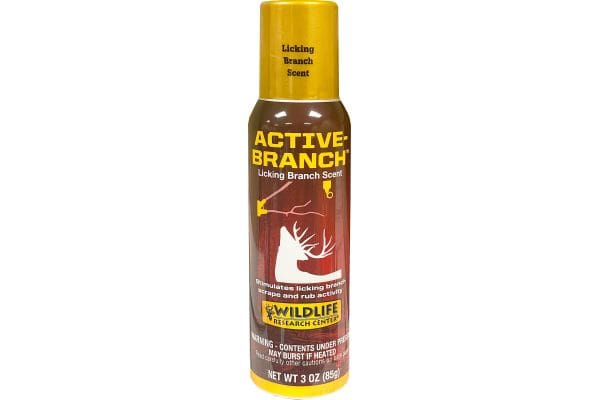As the marketplace for archery and fishing gear expands beyond your local sporting goods store to the internet, a number of overseas direct-to-consumer products are bypassing the federal rod-and-gun tax that supports wildlife and fisheries conservation in America.
That’s the finding of an audit released earlier this month by the Government Accountability Office that recommends Congress consider making online marketplaces, such as Amazon, Alibaba, and Walmart.com, responsible for collecting the 10 to 11 percent excise tax on archery and fishing tackle imports that they facilitate.
Arrows, hunting bows, and fishing lures (among hundreds of other product categories) that are manufactured overseas and shipped directly to consumers are a sizeable source of “leakage” in the tax that U.S. manufacturers pay, which is largely responsible for the abundant fish and wildlife that American hunters and anglers pursue.
On an annual basis, these alternative-sourced fishing and bowhunting products siphon between $6 and $17 million annually from the tax fund that their domestic competitors are required to pay. (These excise tax programs are commonly known as Pittman-Robertson on the hunting and firearms side and Dingell-Johnson on the fishing side.)
Recent research looked only at archery and sportfishing gear; there’s no equivalent study of leakage in non-archery hunting gear, but because firearms and ammunition are highly regulated, the market for foreign-made, direct-to-consumer products is likely relatively small compared to the largely unregulated archery and fishing markets.
The entire issue of tax “leakage” is a useful reminder of how and why these revenues were established in the first place. The system is supposed to work as follows: The U.S. Department of the Treasury collects tax revenue from manufacturers and importers of hunting and fishing gear. That revenue is distributed by the U.S. Fish and Wildlife Service to state fish-and-game agencies to fund sustainable fish and wildlife management, public access, and habitat investments. Through this process, the Pittman-Robertson Act generated approximately $1.2 billion in wildlife restoration funding in 2023, and the the Dingle-Johnson Act generated approximately $425 million in sport fish restoration funds.
Read Next: The Surge in Gun and Ammo Sales Has Created a Boom in Wildlife Conservation Funding
But when those taxes were established (in the 1930s for the hunting-gear tax and in 1950 for the fishing-tackle tax), the revenue-collection mechanism didn’t account for online retailers or direct-to-consumer product fulfillment by foreign companies that bypasses traditional tax collectors.
“The tax, whether we’re talking Pittman-Robertson on the hunting side or Dingell-Johnson on the fishing side, is a manufacturers’ tax,” says Dan Forster, vice president and chief conservation officer for the Archery Trade Association. “The normal scenario is that when a U.S. manufacturer produces a product and either sells it in bulk to a wholesaler or sells it to a big retailer, the tax is levied at that first point of sale.”
In other words, consumers don’t see the tax itemized on a receipt because it’s already been levied and collected before sporting goods appear on store shelves. But the prices consumers pay is adjusted upward to cover the tax, which is 11 percent on bows and anything that touches a bow, including strings, peeps, sights, rests, stabilizers, broadheads, and quivers. For fishing equipment, the tax is 10 percent on rods, reels, fishing line, lures, landing nets, and spear guns.
“It’s hidden in the cost of the item, so you can’t tell it’s there,” Forster says of the tax. “That’s part of our problem. People don’t really understand that the manufacturers are paying in to our excise tax fund, and that it’s going for good things.”
But the onset of e-commerce has created work-arounds that allow foreign manufacturers and the companies that facilitate sale of their products to U.S. consumers to bypass tax collection. Forster stresses that these shadow importers are not conspiring to avoid paying the conservation tax, but rather exploiting an oversight that should be addressed in the interests of consistency and fairness.
He notes that online retailers like Amazon and Walmart.com can’t be defined as importers, because they rarely receive and store the product. Instead, they facilitate the transaction between U.S. consumers and overseas suppliers, but don’t actually touch the product, which is shipped directly from the manufacturer to the consumer.
“In the case of an Amazon, there’s no real importer of record,” says Forster. “The rules don’t address a facilitator of commerce because they’re antiquated. They weren’t developed to consider a scenario like we have today, and the GAO report basically told us that we can’t fix this with a regulation change. We’re going to need a legislative change.”
If a legislative fix isn’t forthcoming, Forster says, the archery and sportfishing industries could lobby to scrap the conservation taxes altogether.
“This is a big deal for our community at large,” says Forster. “The real issue is one of fairness. We have U.S.-based companies that are paying this tax, and the expectation is that the money collected is an investment in conservation and our industry. But the other expectation is that it’s applied fairly. When we have a situation where foreign companies are undercutting U.S.-based manufacturers because they’re not paying this conservation tax, they’re at a competitive advantage. That’s not sustainable. We’ve told Congress that if we can’t fix this thing and make it fair and equitable, then it [P-R and D-J excise taxation] has to go away. Help us fix this thing so that we can maintain the tax structure that has resulted in so much benefit for our community.”
In the bowhunting category, the main source of “leakage” seems to be arrows, says Forster.
“There are other product categories that are bypassing the system, but our members tell us that arrow shafts are far and away the [main] category” circumventing the tax.
“We estimate the leakage is a minimum of eight percent of the $50 million in excise taxes that the archery industry pays annually,” says Forster. “When you’re thinking of the U.S. government and its overall tax collection, that’s a rounding error. But in an industry like ours, that’s an average loss of a couple hundred thousand dollars per state, which means a couple of full-time biologists or wildlife management positions and maybe a shooting range. And that impact is occurring every year that we don’t close this loophole.”
Both the ATA and the American Sportfishing Association have lobbied Congress to address the leakage through legislation, as the Government Accountability Office report recommends. Forster says he’s pessimistic the legislative fix can be accomplished this year, but there is very little opposition to it. If it doesn’t pass as a rider to a must-pass piece of legislation in the current Congress, he’s hopeful it will pass the next Congress.
“We’re asking for exactly what the GAO study said, to move the burden of the tax further up the chain to the internet marketplace facilitator, who is acting very much like a traditional importer and therefore should be collecting and remitting the taxes on the products they import,” says Forster. “Absent the importer, the tax should be collected at the first point of sale, which i] the end user, the consumer.”
Forster says the GAO study looked at the difficulty of requiring consumers to pay the tax when they receive sporting goods directly from a foreign manufacturer. This is an unlikely solution.
“Consumers don’t know they’re liable for the tax, for one, and there’s not a lot of information on the IRS website that explains how to pay the tax,” says Forster. “And the GAO report also indicates that it costs something like $3.80 in administrative costs for each transaction to process the tax, so if you buy a dozen lures and your tax bill is .62 cents, everybody is going backward on that. Good tax policy says we should move the collection burden up the chain if we can.”
Read the full article here




